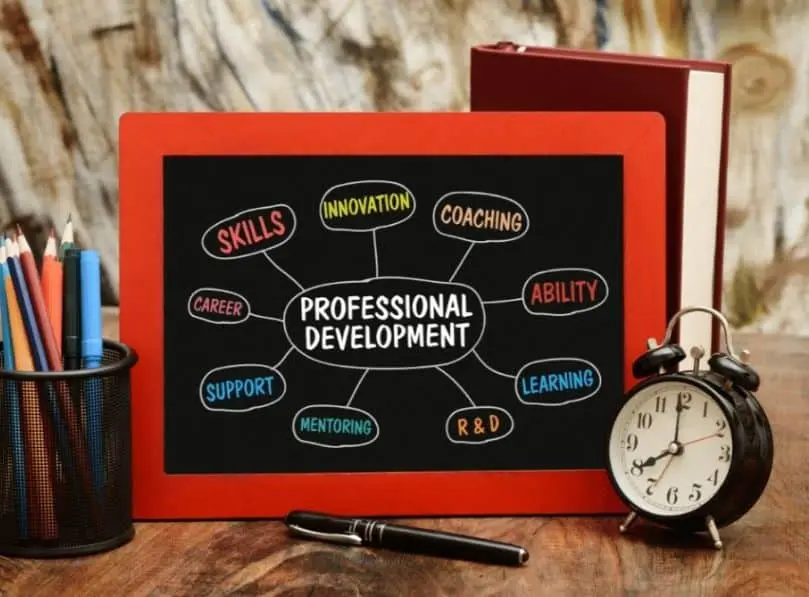Definition of Competencies and Their Applications

When defining competencies, it usually pertains to a combination of skills, knowledge, and behavior that enable individuals to finish tasks competently. That’s why it is essential to have a better understanding of this concept for you to examine your current competencies and the areas you still need to improve.
This article will dig deeper into the definition of competencies and provide some practical tips to hone them.

The Origin of Competencies
As early as the 1970s, employers began using competencies when traditional assessments like aptitude and knowledge-based tests weren’t effective in examining which employees performed better at their respective roles.
Competency frameworks are now frequently used in the hiring and management of employees. Many companies used these frameworks as part of their employment processes.
In 2015, Deloitte conducted a study that revealed 89% of the top-performing companies had clear skills and abilities defined for all job positions they had. On the other hand, only 48% of other businesses had these clearly defined job roles and descriptions. Job seekers must keep this data in mind, as it can affect their job prospects.
Why Use Competencies?
No matter what field you specialize in or how big your organization is, using competencies can help you do the following:
- Adapt to changing job markets more effectively.
- Choose the most qualified employees during the hiring process.
- Develop strong and effective leaders.
- Enhance the performance of your employees.
Experts gathered research that highlights the importance of competencies in various aspects of talent management. Here are some key findings:
Making Strategic Workforce Decisions
- Companies that employ competencies are 92% more effective at adapting to economic shifts.
- They are 144% more skilled at planning for future workforce needs.
- They can enhance their capacity to 156% to nurture exceptional leaders.
Improving Retention and Hiring
- Companies that utilize competencies have a 40% lower turnover rate among top-performing employees.
- Their total voluntary turnover rate decreases by 17%.
- They excel at hiring the most suitable candidates, with an 87% greater success rate.
Boosting Productivity and Employee Engagement
- Companies that use competencies see a 26% increase in revenue per employee.
- Employee performance goes up by 19%.
- Notably, 89% of the top-performing organizations have well-defined core competencies for all positions, while only 48% of other companies do.
Different Types of Competencies
There are three types of competencies:
Behavioral Competencies: These competencies highlight the innate, more subtle qualities in employees. Take, for instance, Creativity and Innovation, which hold significant importance for an agency.
Technical Competencies: These are about applying important skills and knowledge needed for specific job fields. For instance, Strategic Sales Planning, crucial for those in the Sales Department.
Leadership Competencies: These identify the vital traits of effective leaders and turn them into behaviors we can measure. For instance, 'Nurturing Innovation,' a critical quality for leaders in a company.
How to Improve Your Competencies
To guide you in honing your competencies, here are a few practical tips:
- Don’t Be Afraid to Face Fears: Determine your fears and how they can hinder you from achieving your goals. For example, if you struggle with public speaking, focus on your abilities to overcome your fear.
- Do Research: Expand your knowledge and critical thinking through researching topics related to your field. Analyzing information and comparing it to what you already know will help you grow.
- Seek Feedback: Ask others for input on your work, projects, and responsibilities. Feedback can highlight areas where your competencies need improvement, like listening and teamwork skills.
- Learn New Skills: Acquiring new skills also means enhancing your competencies. For example, learning a new language can improve your analytical thinking and diligence.
- Observe Others: Watch how people around you perform their tasks, especially those you admire. You can learn fresh methods and strategies to boost your productivity at work.
- Network and Learn: Make connections with industry leaders and professionals by attending conferences and seminars. These experiences provide opportunities to learn new methods and develop your competencies.
Showing Competencies at Work
Here is a practical guide on how to integrate your competencies in the workplace:
- Practice Active Listening: Use your critical thinking and listening skills by showing you understand what others say. Summarize or paraphrase what you have heard to confirm your understanding.
- Plan for Obstacles: Apply your analytical and critical thinking skills to anticipate and oversee potential problems. Doing this helps you consider factors that can potentially create challenges in the future. When planning for these obstacles, make sure to consider the processes, procedures, and resources needed to address them.
- Adaptability: Your abilities grow as you face different situations and address challenges. Being adaptable means recognizing when you need new skills or capabilities. Adapting to changes enables you to oversee multiple projects and embrace new ideas and processes more effectively.
Conclusion
Competencies are vital in assisting companies to locate individuals who not only excel in their roles but also blend seamlessly into the organization. When competencies serve as the basis for the talent journey, they also contribute to keeping things consistent.
Skills can be acquired with consistent effort and dedication, but competencies are frequently an integral part of an individual's personality. By defining core competencies, an organization can avoid spending so much time and resources attempting to motivate people who may be resistant to change.
An organization may concentrate instead on selecting employees who can demonstrate the abilities needed to be valuable to the organization and support its overall success.
Insights You Need to Get It Right







